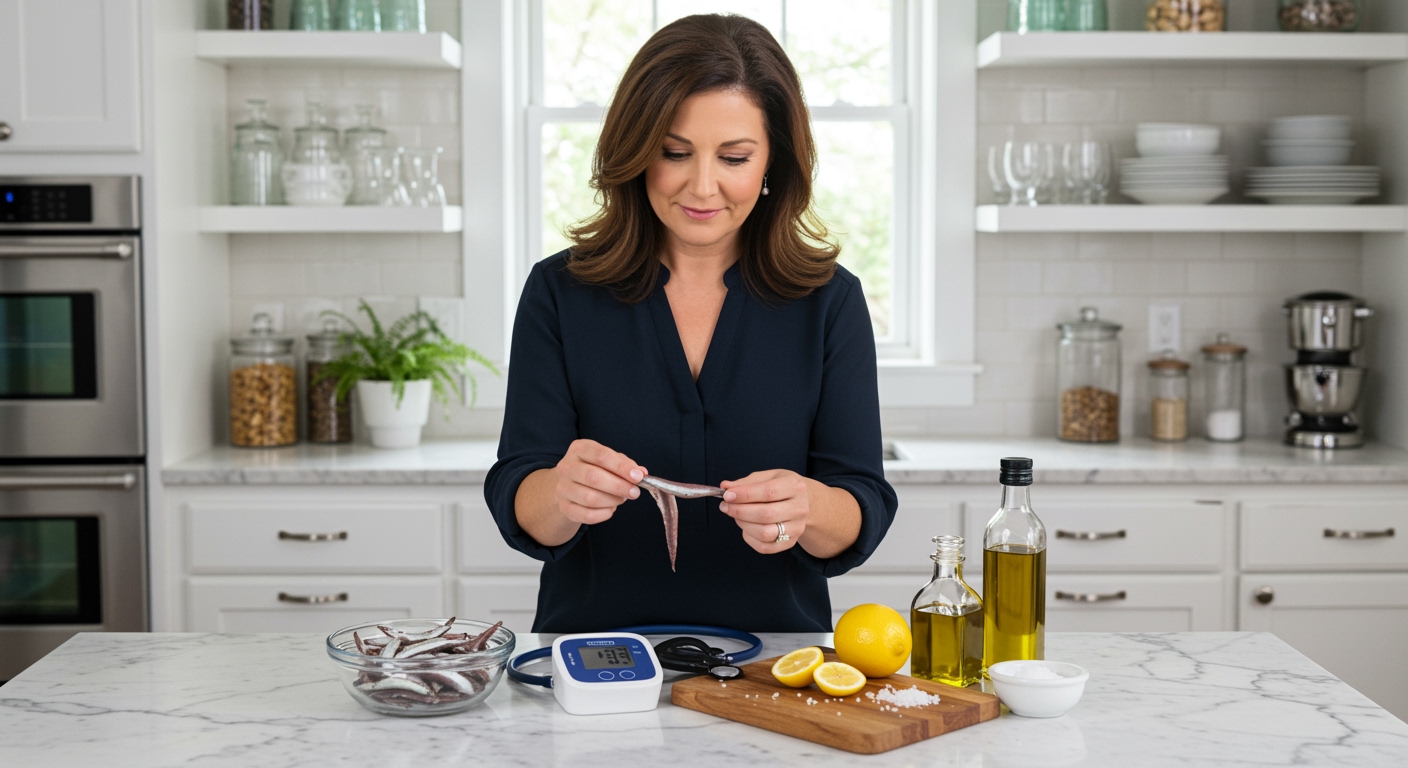✪ Key Takeaway: Shrimp contains bioactive peptides that may help raise low blood pressure naturally through improved circulation.
Introduction
Your doctor just told you that your blood pressure is too low and you need to make some changes.
You might be wondering if certain foods can help raise your blood pressure to healthier levels without medication.
Hi, I’m Abdur, your nutrition coach and today I’m going to explain how shrimp might be the unexpected solution for stabilizing low blood pressure.
What Makes Shrimp Special for Blood Pressure?
Shrimp contains unique bioactive peptides that work differently than most foods people think about for blood pressure.
These peptides are small protein fragments that become active when your digestive system breaks down shrimp protein.
Research shows that shrimp protein hydrolysate can help improve circulation and support healthy blood pressure levels.
The key lies in how these peptides interact with your cardiovascular system once they enter your bloodstream.
Unlike high-sodium foods that temporarily raise blood pressure through water retention, shrimp works through vascular mechanisms that support long-term stability.
Your body processes these peptides within 2-4 hours after eating, making shrimp a relatively fast-acting food choice for blood pressure support.
✪ Fact: Shrimp contains more bioactive peptides per serving than most other seafood options.
How Much Sodium Does Shrimp Really Contain?
Many people worry about shrimp because they think it contains too much sodium for blood pressure management.
The truth is that fresh shrimp naturally contains about 224 milligrams of sodium per 100-gram serving.
This amount is actually moderate compared to processed foods and can be part of a balanced approach to managing low blood pressure.
Your body needs some sodium to maintain proper blood volume and pressure, especially if you have hypotension.
The sodium in shrimp works together with its protein content to help your body maintain fluid balance more effectively than isolated salt.
However, avoid breaded or heavily processed shrimp products that contain added sodium and artificial preservatives.
✪ Pro Tip: Choose wild-caught shrimp over farm-raised varieties for better nutrient profiles and lower chemical exposure.
What Does the Research Actually Say?
A randomized controlled trial published in 2019 examined the effects of shrimp protein hydrolysate on blood pressure in adults.
Participants who consumed shrimp-derived peptides showed measurable improvements in both systolic and diastolic blood pressure readings.
The study found that these improvements occurred within 8 weeks of regular consumption without significant side effects.
Researchers believe the mechanism involves improved endothelial function, which helps blood vessels relax and maintain proper pressure.
Additional research from Arctic regions shows that populations with high shrimp consumption have lower rates of cardiovascular problems.
These studies suggest that regular shrimp consumption might offer protective benefits beyond just addressing low blood pressure.
✪ Note: Most research used concentrated shrimp protein extracts rather than whole shrimp in meals.
How Should You Include Shrimp in Your Diet?
Start with 2-3 servings of shrimp per week to see if it helps stabilize your blood pressure readings.
Each serving should be about 3-4 ounces, which provides enough protein and peptides without overdoing the sodium intake.
Prepare shrimp using gentle cooking methods like steaming, grilling, or light sautéing to preserve the beneficial compounds.
Avoid heavy sauces, breading, or deep-frying that can add unnecessary calories and inflammatory ingredients.
Combine shrimp with vegetables and whole grains to create balanced meals that support overall cardiovascular health.
Monitor your blood pressure regularly when adding shrimp to your diet to track any positive changes over time.
✪ Pro Tip: Eat shrimp earlier in the day to allow your body time to process the beneficial peptides effectively.
Are There Any Risks or Limitations?
People with shellfish allergies should obviously avoid shrimp completely as it can trigger severe reactions.
Those taking blood pressure medications should consult their doctor before significantly increasing shrimp consumption.
Shrimp contains cholesterol, though research shows dietary cholesterol has less impact on blood levels than previously thought.
Some people may experience digestive discomfort if they suddenly increase their shrimp intake too quickly.
Environmental concerns about sustainable fishing practices should also factor into your decision to include more shrimp in your diet.
Remember that shrimp alone cannot fix underlying health conditions that cause chronically low blood pressure.
✪ Note: Always work with healthcare providers to address the root causes of persistent low blood pressure.
The Bottom Line
Shrimp can be a valuable addition to your diet if you struggle with low blood pressure, thanks to its unique bioactive peptides and moderate sodium content.
The best nutrition solutions often come from understanding how individual foods work with your body rather than following generic dietary rules.
What has been your experience with shrimp and blood pressure, and do you have any questions about incorporating it into your meal planning?
References
At NutritionCrown, we use quality and credible sources to ensure our content is accurate and trustworthy. Below are the sources referenced in creating this article:
- PMC: Bioactive Peptides from Marine Sources
- Nutra Ingredients USA: RCT Supports Shrimp Protein Hydrolysate Blood Pressure Benefits
- Nunatsiaq News: High Blood Pressure Then Eat Northern Shrimp Research Suggests





